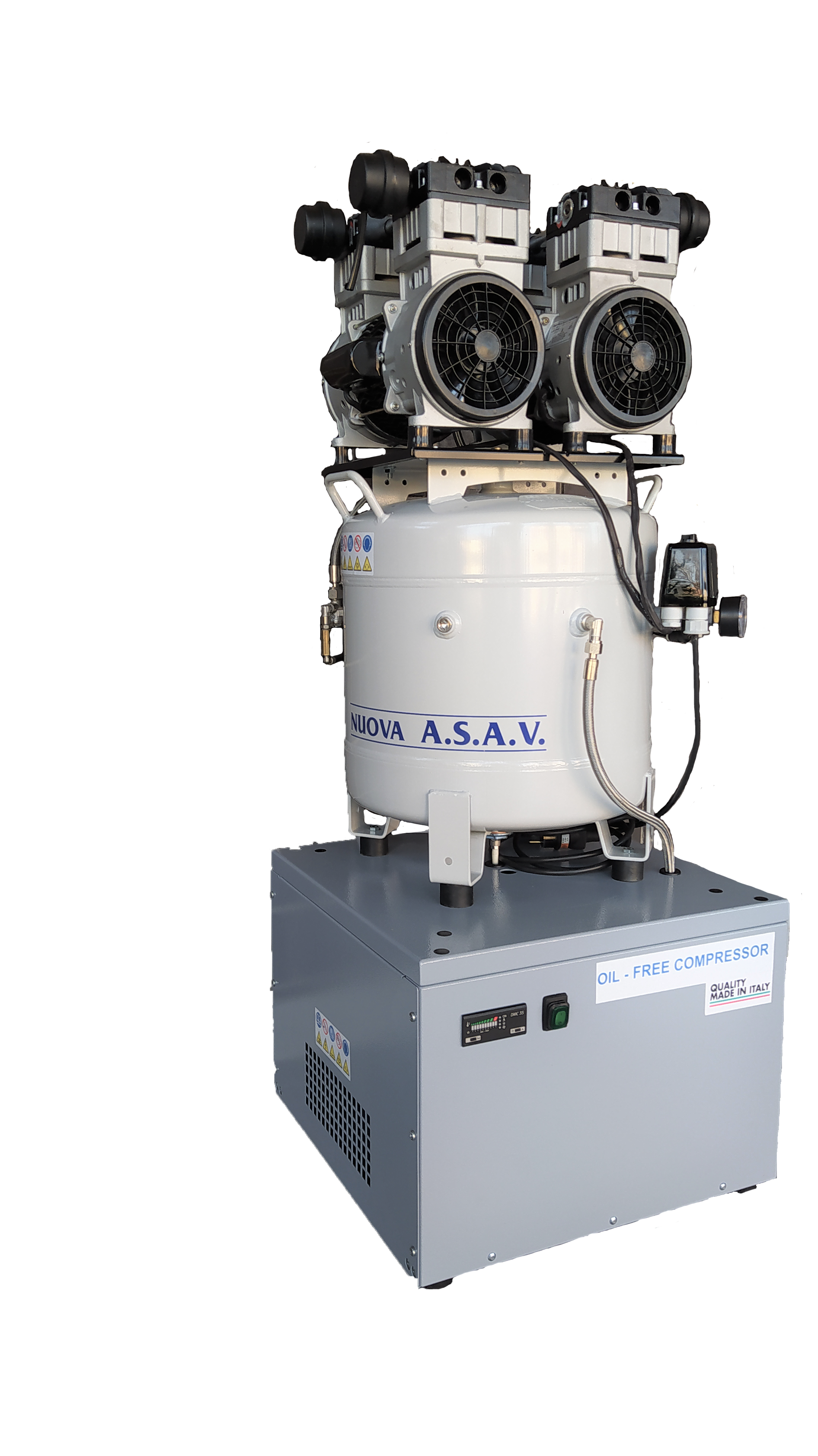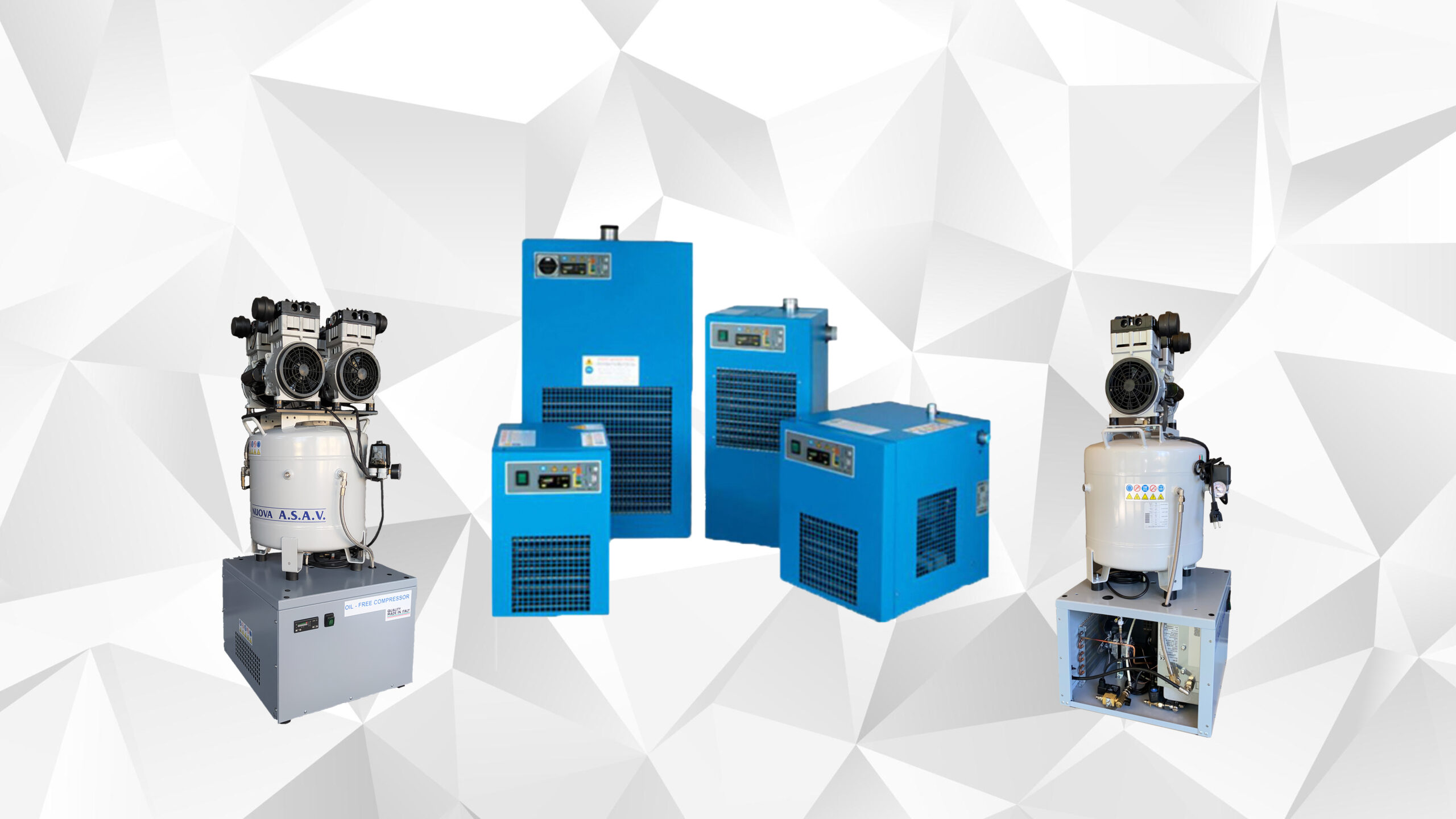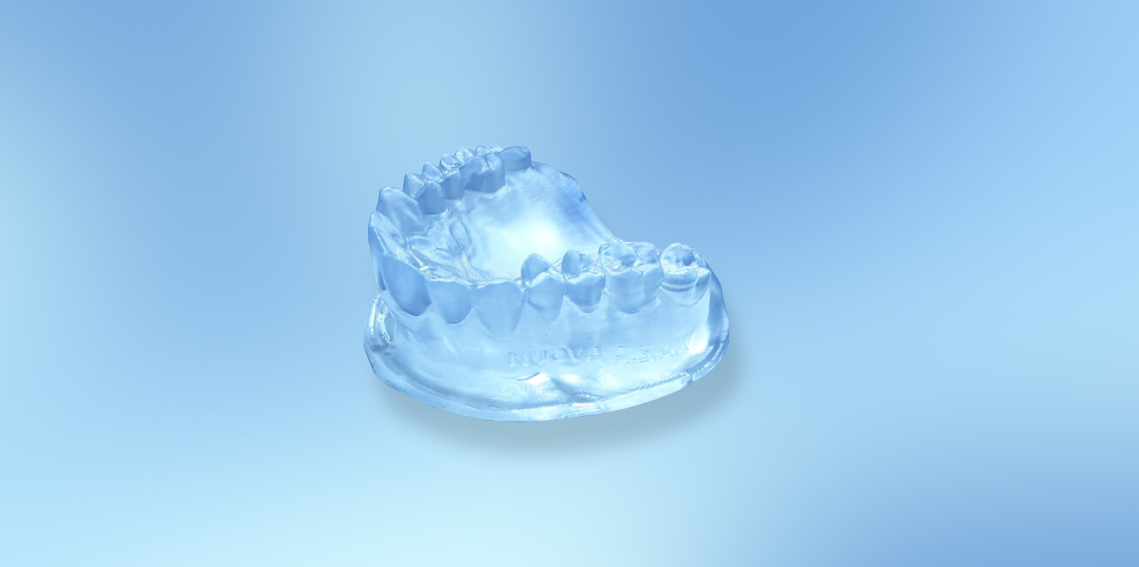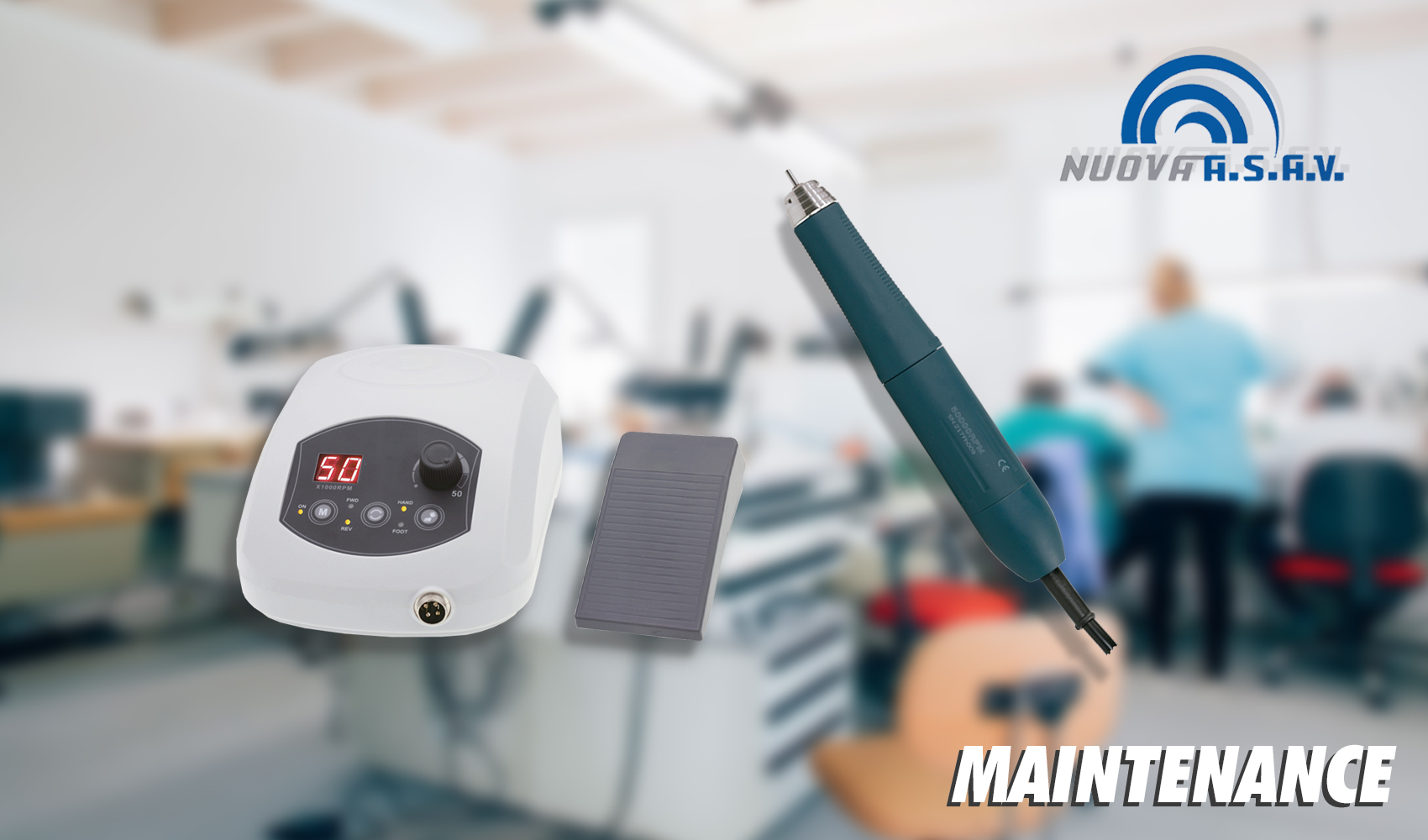Compressed air used in dental surgeries, if not properly treated, contains a high amount of pollutants, most of which is water vapour.
The latter is the main cause of premature corrosion and wear of equipment connected to the dental unit, mainly air turbines.
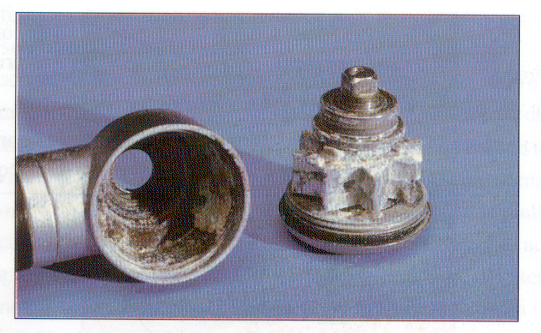
All this translates into higher operating and maintenance costs for the equipment and poor service quality.
To quantify this phenomenon, let us take a practical example:
A 5 HP compressor that makes about 500 l/min of free air at 7 bar, at an ambient temperature of 25°C and a relative humidity of 70%, sucks as much as 0.5 l/h of water in the form of steam from the environment.
Following the compression phase, approximately 75 per cent of this water vapour condenses in the form of tiny water droplets which, if not properly removed, will end up in the system’s distribution lines.
Through the use of final chillers, condensate separators and automatic drains, it is possible to remove up to 70-80% of the moisture present, but only through the installation of a refrigeration dryer will it be possible to remove a further part of the residual moisture in order to guarantee adequately dehumidified air suitable for use in modern pneumatic systems.
In view of this, it is essential to equip one’s compressor with an air dryer, preferably a condenser dryer.
For this solution, it is not necessary to replace the entire compressor, but it is possible to fit a dryer at the air outlet, which is a fairly modest and unobtrusive device in terms of noise.
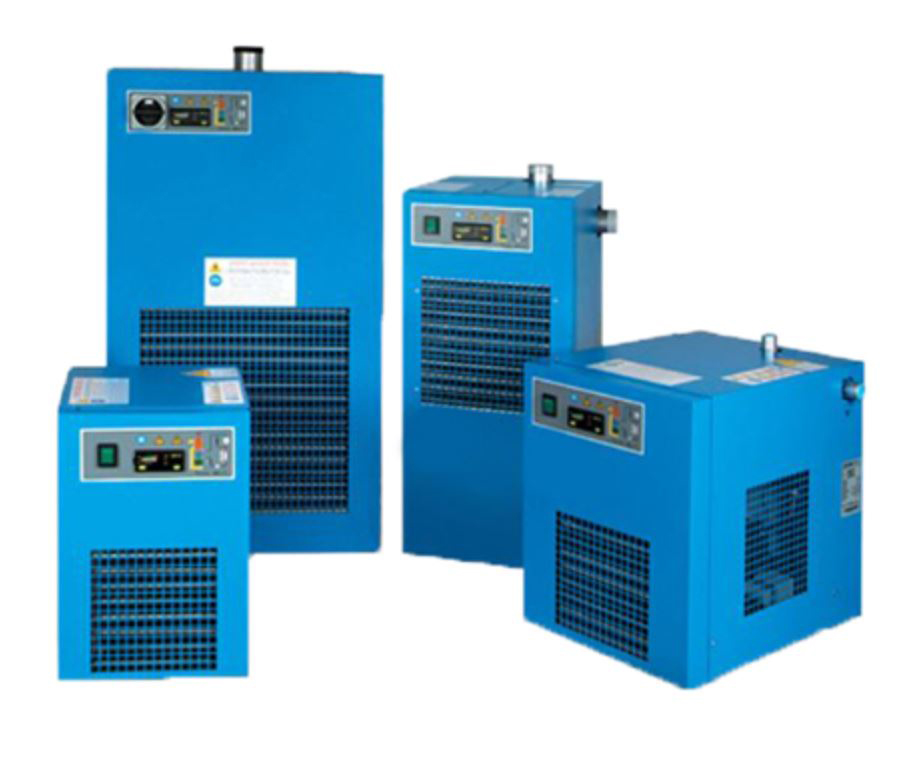
For more info: DRY COMPRESSOR
Another very important consideration that is very often overlooked is the position of the compressor in relation to the dental unit.
It is good to know that a long pipeline running through rooms with different temperatures is detrimental to the creation of condensate.
It is therefore advisable to design the shortest possible route (where possible) of the compressor/units and to ensure that this pipework is not subject to major temperature changes. It is however a good idea to insulate the pipes with special sheaths, such as those seen in classic wall-mounted air conditioners for domestic use.
